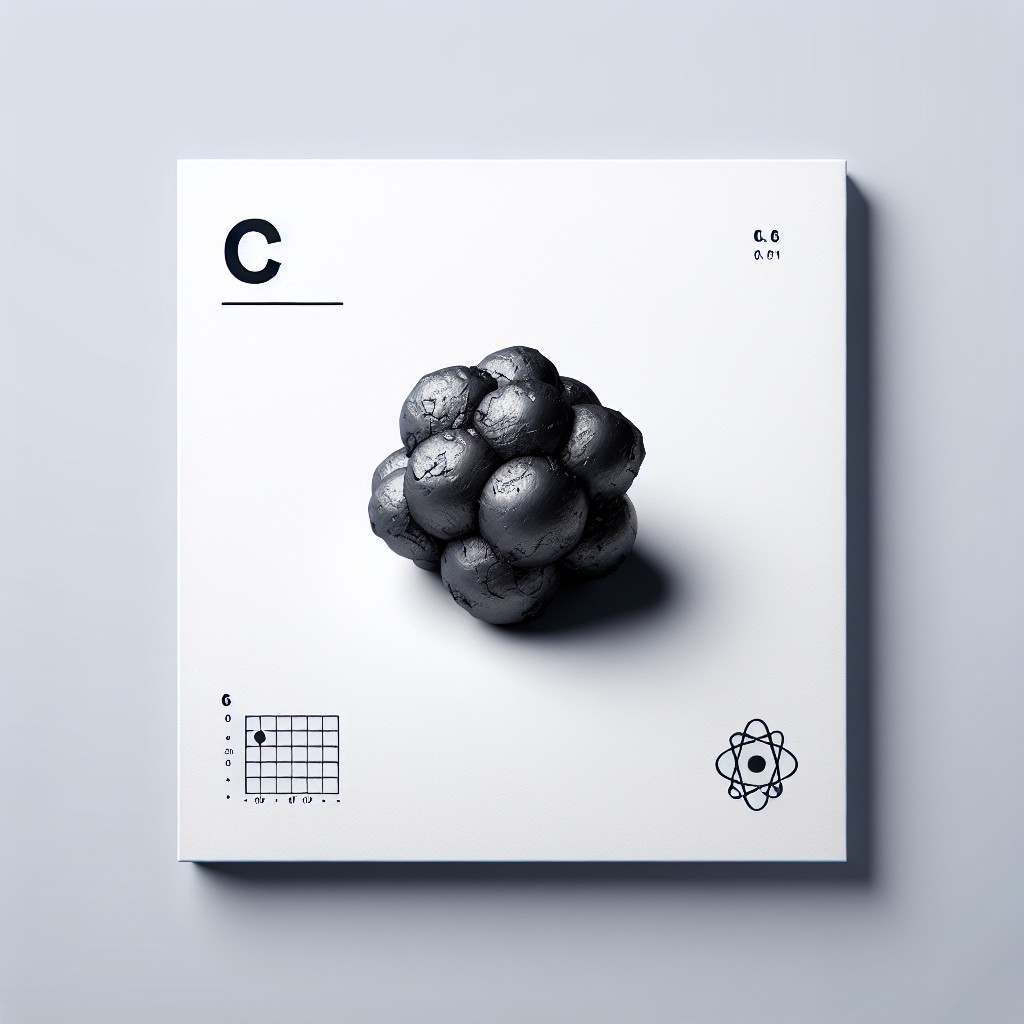Yttrium is a chemical element with the symbol Y and atomic number 39. It is a silvery-white, lustrous metal that is relatively stable in air. Yttrium is a rare earth element and is found in small amounts in the Earth’s crust. It was discovered in 1794 by Johan Gadolin and named after the village of Ytterby in Sweden, where it was first found.
Yttrium has several unique properties that make it valuable in various industries. It has a high melting point of 1,522 degrees Celsius, making it suitable for use in high-temperature applications. It is also a good conductor of electricity and heat, making it useful in electronics and aerospace applications. Yttrium is also known for its ability to form stable compounds with other elements, which makes it useful in the production of alloys and ceramics.
Summary
- Yttrium is a rare earth metal with unique properties and characteristics.
- Yttrium is widely used in electronics, aerospace, medical science, energy, glass production, ceramics, metallurgy, and environmental science.
- Yttrium plays a crucial role in the development of semiconductors, LEDs, materials science, and engineering.
- Yttrium is used in MRI scans and cancer treatment, as well as in nuclear power and renewable energy sources.
- Yttrium has promising future prospects in technology, with advancements and innovations in various fields.
Yttrium in Electronics: Applications in Semiconductors and LEDs
Yttrium plays a crucial role in the production of semiconductors, which are essential components of electronic devices such as computers, smartphones, and televisions. Yttrium oxide is used as a dopant in the production of silicon wafers, which are the building blocks of semiconductors. By adding yttrium to silicon, the electrical properties of the material can be modified, allowing for the creation of transistors and other electronic components.
Yttrium is also a key component in the development of light-emitting diodes (LEDs). LEDs are energy-efficient lighting devices that are used in a wide range of applications, from household lighting to automotive headlights. Yttrium aluminum garnet (YAG) is a crystal that emits light when exposed to an electric current. This property makes it ideal for use as a phosphor in LEDs, where it converts blue light into white light.
Yttrium in Aerospace: Contributions to Materials Science and Engineering
Yttrium is widely used in the aerospace industry due to its unique properties. It is used in the production of high-temperature alloys, which are essential for the construction of aircraft engines and other components that operate at extreme temperatures. Yttrium can improve the high-temperature strength and oxidation resistance of alloys, making them more durable and reliable in aerospace applications.
Yttrium is also used in the development of advanced materials for aerospace applications. Yttria-stabilized zirconia (YSZ) is a ceramic material that has excellent thermal and mechanical properties. It is used as a thermal barrier coating on turbine blades to protect them from high temperatures. YSZ is also used in the production of ceramic matrix composites, which are lightweight and strong materials that can withstand extreme conditions.
Yttrium in Medical Science: Applications in MRI Scans and Cancer Treatment
| Application | Metric |
|---|---|
| MRI Scans | Yttrium-based contrast agents improve image quality and accuracy |
| Cancer Treatment | Yttrium-90 is used in targeted radiation therapy to destroy cancer cells |
| Cancer Treatment | Yttrium-90 microspheres are used to treat liver cancer |
| Cancer Treatment | Yttrium-90 is also used in brachytherapy to treat prostate cancer |
Yttrium has important applications in medical science, particularly in the field of imaging and cancer treatment. Yttrium-90 is a radioactive isotope of yttrium that is used in positron emission tomography (PET) scans and magnetic resonance imaging (MRI) scans. It emits positrons, which can be detected by PET scanners to create detailed images of the body’s internal structures. Yttrium-90 is also used as a contrast agent in MRI scans, where it enhances the visibility of certain tissues or organs.
In cancer treatment, yttrium-90 is used in a procedure called radioembolization or selective internal radiation therapy (SIRT). In this procedure, tiny beads containing yttrium-90 are injected into the blood vessels that supply the tumor. The radioactive yttrium-90 emits radiation that destroys cancer cells while sparing healthy tissue. This targeted therapy is used to treat liver cancer and other types of tumors that cannot be surgically removed.
Yttrium in Energy: Role in Nuclear Power and Renewable Energy Sources
Yttrium has important applications in both nuclear power and renewable energy sources. In nuclear power plants, yttrium is used as a neutron absorber in control rods. These control rods are inserted into the reactor core to regulate the rate of nuclear fission and prevent the reactor from overheating. Yttrium is particularly effective at absorbing thermal neutrons, which helps to maintain the stability and safety of nuclear reactors.
Yttrium is also used in the development of renewable energy sources, such as solar cells and fuel cells. Yttrium oxide is used as a dopant in the production of thin-film solar cells, which convert sunlight into electricity. By adding yttrium to the semiconductor material, the efficiency and performance of the solar cell can be improved. Yttrium-stabilized zirconia is also used as an electrolyte in solid oxide fuel cells, which generate electricity by converting chemical energy into electrical energy.
Yttrium in Glass Production: Enhancing Strength and Clarity

Yttrium plays a crucial role in the production of glass, where it is used to enhance its strength and clarity. Yttrium oxide is added to glass formulations to increase its refractive index, which improves its optical properties. This makes yttrium-doped glass ideal for use in lenses, optical fibers, and other optical components.
Yttrium also improves the mechanical properties of glass, making it more resistant to breakage and thermal shock. It acts as a stabilizer, preventing the growth of crystals that can weaken the glass structure. Yttrium-doped glass is used in applications where high strength and durability are required, such as in the production of glass for smartphones, tablets, and other electronic devices.
Yttrium in Ceramics: Improving Durability and Thermal Stability
Yttrium is widely used in the ceramics industry due to its ability to improve the durability and thermal stability of ceramic materials. Yttria-stabilized zirconia (YSZ) is a ceramic material that has excellent mechanical and thermal properties. It is used as a structural material in gas turbines, where it can withstand high temperatures and mechanical stresses.
Yttrium also improves the thermal shock resistance of ceramics, making them more resistant to sudden changes in temperature. This property is particularly important in applications where ceramics are exposed to extreme heat or rapid temperature fluctuations, such as in the production of kiln furniture, crucibles, and refractory materials.
Yttrium in Metallurgy: Strengthening Alloys and Reducing Corrosion
Yttrium is widely used in metallurgy to strengthen alloys and reduce corrosion. Yttrium can improve the mechanical properties of alloys by forming a solid solution with the base metal. This can increase the strength, hardness, and ductility of the alloy, making it more suitable for use in demanding applications.
Yttrium is also effective at reducing corrosion in alloys. It forms a protective oxide layer on the surface of the alloy, which acts as a barrier against corrosive substances. This makes yttrium-doped alloys ideal for use in marine environments, where they are exposed to saltwater and other corrosive agents.
Yttrium in Environmental Science: Remediation of Contaminated Soils and Water
Yttrium has important applications in environmental science, particularly in the remediation of contaminated soils and water. Yttrium oxide nanoparticles can be used to remove heavy metals and other pollutants from contaminated soils. These nanoparticles have a high surface area, which allows them to adsorb and immobilize contaminants, preventing them from leaching into groundwater or being taken up by plants.
Yttrium is also used in the development of environmental remediation technologies, such as adsorbents and catalysts. Yttrium-based adsorbents can remove pollutants from water, while yttrium-based catalysts can break down organic compounds and convert them into less harmful substances. These technologies are used to clean up contaminated sites and protect the environment from the harmful effects of pollution.
Future Prospects of Yttrium: Advancements and Innovations in Technology
The future prospects for yttrium are promising, with potential advancements and innovations in various industries and applications. In the electronics industry, yttrium could be used to develop more efficient and powerful semiconductors, leading to faster and more advanced electronic devices. Yttrium-based materials could also play a crucial role in the development of quantum computers, which have the potential to revolutionize computing technology.
In the energy sector, yttrium could contribute to the development of more efficient solar cells and fuel cells, leading to increased adoption of renewable energy sources. Yttrium-based alloys could also be used in the construction of next-generation nuclear reactors, which are safer and more sustainable than current designs.
In the medical field, yttrium could be used in the development of targeted therapies for various diseases, including cancer. Researchers are exploring the use of yttrium nanoparticles for drug delivery, where they can be used to deliver drugs directly to cancer cells, minimizing side effects and improving treatment outcomes.
Yttrium is a versatile element with a wide range of applications in various industries. Its unique properties make it valuable in electronics, aerospace, medical science, energy, glass production, ceramics, metallurgy, environmental science, and many other fields. Yttrium’s contributions to these industries have led to advancements in technology and innovation, with the potential for even more exciting developments in the future. As researchers continue to explore the properties and applications of yttrium, we can expect to see further advancements and innovations that will shape the future of technology and industry.
FAQs
What is Yttrium (Y)?
Yttrium (Y) is a chemical element with the symbol Y and atomic number 39. It is a silvery-metallic transition metal chemically similar to the lanthanides and has often been classified as a “rare-earth element”.
What are the properties of Yttrium (Y)?
Yttrium (Y) is a soft, silvery-white metal that is relatively stable in air. It is a good conductor of electricity and heat, and has a high melting point of 1526°C. Yttrium is also paramagnetic, meaning it is weakly attracted to magnetic fields.
Where is Yttrium (Y) found?
Yttrium (Y) is found in small amounts in many minerals, including monazite, xenotime, and bastnäsite. It is also found in some uranium ores. Yttrium is primarily produced through the extraction and refining of these minerals.
What are the uses of Yttrium (Y)?
Yttrium (Y) has a variety of uses, including in the production of stainless steel and other alloys. It is also used in the production of phosphors for television screens and energy-efficient lighting. Yttrium is used in the production of superconductors, which have zero electrical resistance at very low temperatures. It is also used in the medical field for imaging and cancer treatment.
Is Yttrium (Y) toxic?
Yttrium (Y) is not considered toxic, but it can be a skin and eye irritant. It is important to handle yttrium and its compounds with care and follow proper safety procedures.


